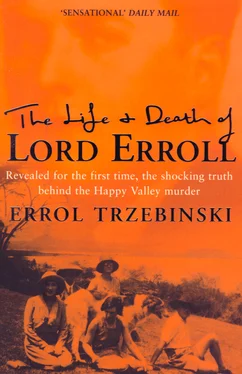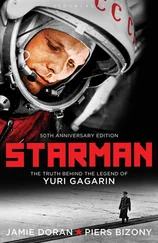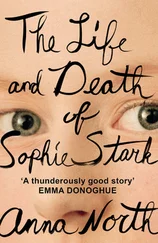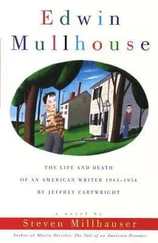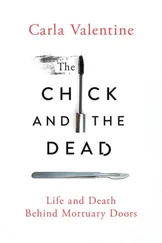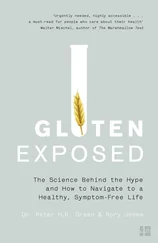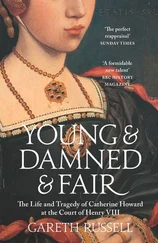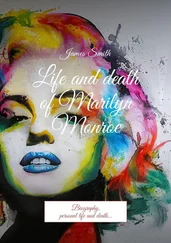THE LIFE AND DEATH OF LORD ERROLL
THE TRUTH BEHIND THE HAPPY VALLEY MURDER
Errol Trzebinski
WITH EMMA PERY

For the grandchildren and their childrenespecially the Hon. Harry, Amelia, Laline and Richard Hay
‘There’s something the dead are keeping back’
Robert Frost
‘There’s always something more to everything’
Robert Frost
Cover
Title Page
Dedication
Epigraph
Prologue
1 Quest for the Truth
2 Gnarled Roots
3 Boyhood and Eton
4 To Hell with Husbands
5 Slains
6 Oserian
7 Blackshirts in Kenya?
8 Josh Posh on the Warpath
9 The Infernal Triangle
10 The Investigation
11 The Sallyport Papers
12 All’s Fair in Love and War
Appendix
Epilogue
Bibliography
Index
Acknowledgements
About the Author
Notes
Other Works
Poem
Copyright
About the Publisher
On 24 January 1941 Captain the Hon. Josslyn Victor Hay, 22nd Earl of Erroll, Hereditary Lord High Constable of Scotland, was shot in the head. His body was discovered in a hired Buick at a crossroads on the Ngong – Nairobi road, a few miles from Nairobi. The murderer has never been found. The prime suspect was Sir Delves Broughton, 11th Baronet, whose wife Diana was having an affair with Erroll at the time. Broughton was tried for the murder, but acquitted. There the matter rested – though not exactly in peace. The shooting of Lord Erroll set off a volley of speculation that resonates to this day.
In the early 1980s James Fox’s White Mischief was published. An intriguing search for the culprit, it had all the ingredients of a classic detective story, enlivened by a cast of glamorous characters determined to be the sources of their own ruin, whether by excesses of drink, drugs or sex or general fecklessness. The main players in White Mischief were all members of Nairobi’s notorious Muthaiga Club – so snobbish that even Kenya’s governors were vetted for membership. Posterity found it convenient to regard Muthaiga almost as a stage upon which these colourful characters paraded their vices in all their glorious decadence. Broughton, the jealous old cuckold robbed of his luscious young bride, wreaked murderous revenge upon his rival. The implication was that he escaped justice thanks to his privileged position in a society that closed ranks and protected its own. Fox drew a dazzling portrait of this clique of 1930s settlers of the Wanjohi Valley – known as Happy Valley – in the Aberdare mountain range about a hundred miles north of Nairobi. His version of events was an indictment of this exclusive society, a perfect story for a post-colonial age when there was no room for sympathy for any European settlers – past or present – on the African continent. During the final years of the apartheid regime in South Africa, the prevailing impression was that white settlers in Africa were simply no good.
White Mischief was rapturously received in Britain and the States. The Wanjohi Valley settlers were not best pleased with the light in which the book portrayed their forebears, however. Its publication caused a furore there – some members of this community begged the Kenya-raised writer Elspeth Huxley to go into print to defend their reputations. 1 The pioneers’ lives had contained almost intolerable hardships and, for the majority of settlers, the struggle to survive the African climate and make a living continued into the generation that included Lord Erroll. Yet they all seemed to have been condemned by White Mischief for the sins of a few. Whenever the book came up in conversation among Wanjohi Valley’s European inhabitants, hackles were raised.
The 1988 film version of White Mischief – with Charles Dance, Greta Scacchi and Joss Ackland playing out the ill-fated love-triangle – reinforced the muck-raking, cinematic treatment necessitating further distillation of plot and characters at the expense of factual accuracy. The release of the film spawned an astonishing amount of hype and resentment. Letters were published afresh, reviews proliferated all over again. Cannibalised articles fomented all the inaccuracies and misrepresentations, again inflaming the second-generation settlers who had known the original characters. There was a variety of reactions from speculation on who the murderer really was to outrage at the kind of coverage the case has received ever since, in which Lord Erroll’s reputation certainly seems to have been exaggerated. He was no angel, but there is not a shred of evidence that he drank heavily; or that he indulged in orgies – accusations that have since his death been levelled at him by gossip-mongers. The only record of an orgy comes from a couple who turned up at Lord Erroll’s first wife Idina’s home Clouds in the early thirties – after she and Joss divorced. They came into the drawing-room that moonlit night to find the room ‘full of writhing bodies’. 2 Joss had not even been present.
Joss’s affairs were not as numerous as the public have been led to believe since his death, and he had never impregnated women carelessly. Also, he had had the realism not to marry anybody whose feelings would be hurt by infidelity. Far from corrupting the young – another frequent allegation against him – he had only one love affair with a woman younger than himself – she was twenty-seven. He did not smoke or take drugs; in fact, as far as these habits were concerned, he was abstemious in the extreme.
Sir Iain Moncreiffe of that Ilk, who married Lord Erroll’s daughter, fumed about the ‘unprovable scandal about the defenceless dead’ whose only purpose was to ‘sell a gossip column masquerading as history’. Moncreiffe’s loyalty to his father-in-law’s memory made him less impartial than most. Yet there are inaccuracies in White Mischief. Lord Erroll did not move with Idina to a house called Clouds in 1925, as described by Fox. She moved there alone after she and Lord Erroll separated. Nor had Lord Erroll ever found it necessary to close down Oserian, his second home on Lake Naivasha, after the death of his second wife Mary, owing to lack of money. ‘To hell with husbands!’ was Idina’s saying, not his, and at no time did he pose a threat to the marriage of his friends the de Janzés. Such basic inaccuracies show that there is room for other interpretations of Lord Erroll’s life and death.
It is of course by no means unusual for books to contain errors, often at the fault of the publisher. Yet all hitherto published accounts of Lord Erroll’s murder have provoked dissatisfied responses from readers, a reaction that suggests the whole story has not been told before now. As Attorney-General Walter Harragin, who prosecuted for the Crown at Broughton’s trial, observed after his acquittal: ‘Whoever murdered Lord Erroll, Broughton was innocent by law – having been found “not guilty” by the jury after a fair trial.’ 3 Despite the reams of material about Lord Erroll’s murder, the elementary question still begs to be answered: whodunnit?
‘The great sensation locally has been the murder of poor Joss Erroll. It is indeed ironic that the Ngong road should have proved more dangerous than Tobruk.’
Читать дальше
